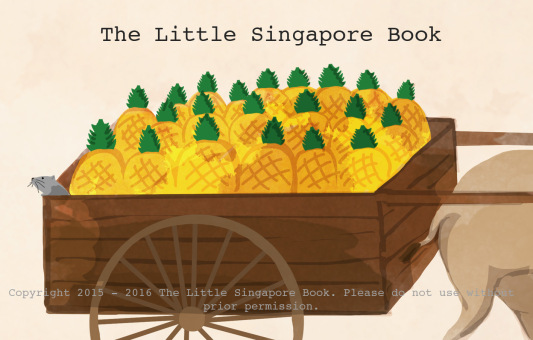
The Singapore Pineapple

We love pineapples—in pineapple tarts, in rojak, in pineapple upside down cake and especially, Thai pineapple fried rice, which some say is really a Singaporean creation! But the best way to enjoy them is on their own, when they are fully ripened and freshly sliced. Then they are sweet and tangy and very refreshing.
Most of the pineapples you see in the markets today come from the Philippines. Some are from Malaysia. But once upon a time, Singapore too grew lots and lots of pineapples. (Spot the cart of pineapples on page 15 of The Little Singapore Book.)
In the early 1900s, pineapple was often grown together with rubber on the same plantation. At that time, rubber was a very profitable crop. That meant that you can sell it for lots of money. But rubber trees grow very very slowly, and take at least five years to mature. The pineapple bush, on the other hand, grows quickly and you can harvest the fruit in just 18 months.
Rubber plantation owners in Singapore and Malaya would grow pineapples and sell them while waiting for their rubber trees to grow. Some of them, such as “Pineapple King” Lim Nee Soon, became very rich this way. (Did you know that Nee Soon Village, Nee Soon Road and Yishun were all named after him?)

During that time, there was even the Singapore pineapple—what they called canned pineapples from the island. Canning helps to preserve the fresh fruit, and canned food was becoming very very popular then. So Singapore began canning its pineapples and those from the Malay Peninsular to ship and sell them to faraway countries like the UK. Until 1921, most of the canned pineapples from Malaya were produced in Singapore. In fact, pineapple canning became one of Singapore’s earliest manufacturing industries and provided many jobs for the people on the island.
By the late 1920s, however, prices for pineapple were falling and plantation owners in Singapore gradually turned to other crops. After the Second World War, very very few pineapple plantations were left on the island. Most had moved to Johor and the rest of the Peninsula.




